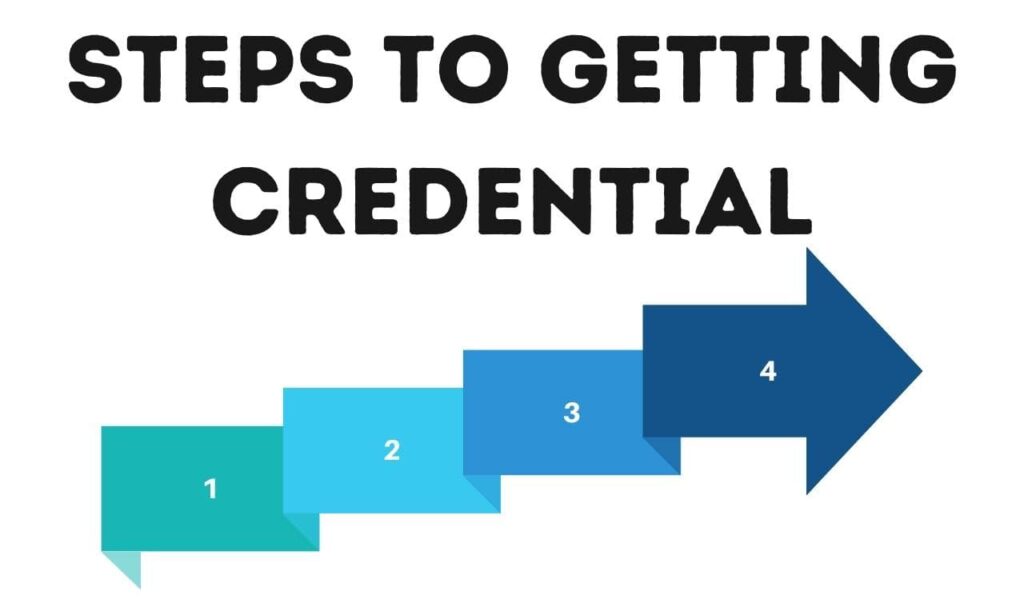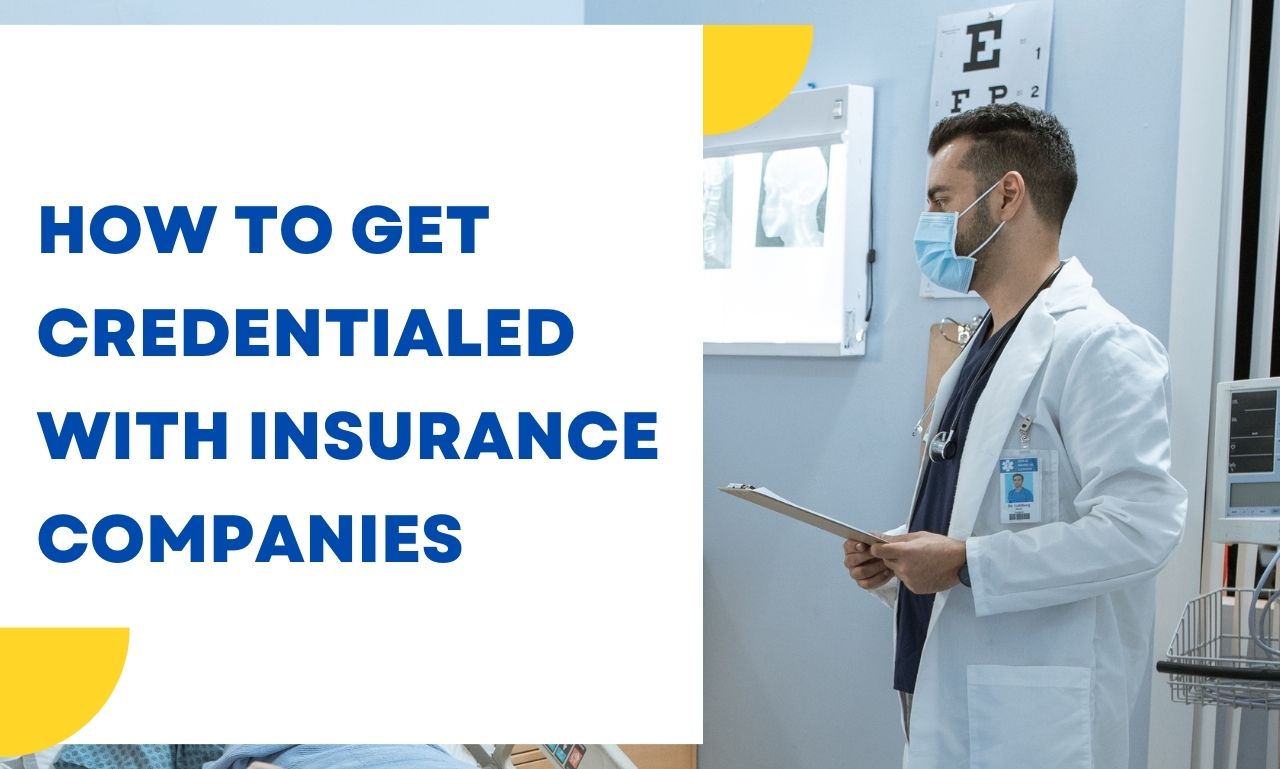Table of Contents
I. Introduction Of How to Get Credentialed with Insurance Companies
A. Explanation of Credentialed with Insurance Companies
Credentialed with insurance companies is a crucial process for healthcare providers. It involves the evaluation of a healthcare professional’s qualifications and background to ensure they meet the standards set by insurance companies. This vetting process is essential for providers to become approved participants in insurance networks.
B. Importance of Being Credentialed
Being credentialed is vital for healthcare providers as it opens up opportunities to expand their patient base, establish trust with insurance companies, and streamline the billing process. Patients often prefer providers who are in-network, making credentialing a strategic move for business growth.
II. Understanding the Credentialing Process
A. Overview of Credentialing Requirements
Understanding the specific requirements for credentialing is the first step. These requirements may include educational background, licensure, board certifications, and other professional qualifications. Knowing these criteria is crucial for a smooth credentialing process.
B. Types of Insurance Companies
Different insurance companies may have slightly varied credentialing processes. It’s important to be aware of these differences, whether dealing with private insurers, government programs like Medicare and Medicaid, or specialized insurance plans.
C. Necessary Documentation
Accurate and comprehensive documentation is the backbone of the credentialing process. This includes diplomas, licenses, certifications, malpractice insurance, and any other documents specified by the insurance companies.
D. Timelines for the Credentialing Process
Understanding the timelines involved is crucial. Credentialing can take weeks to months, and knowing the expected duration helps in planning and avoiding potential disruptions in patient care.
III. Steps to Getting Credentialed

A. Researching Insurance Companies
Before initiating the credentialing process, thorough research on insurance companies is necessary. This includes understanding their networks, patient demographics, and reimbursement rates.
B. Preparing Required Documentation
Gather all necessary documents meticulously. This may involve obtaining updated copies of licenses, certifications, and ensuring that all information is current.
C. Completing Applications
Completing applications accurately is vital. Any inaccuracies can lead to delays or rejection. Pay close attention to details, and if in doubt, seek clarification from the insurance company.
D. Submission and Follow-Up Procedures
Once the application is submitted, understanding the follow-up procedures is key. Regularly checking the status of the application and promptly addressing any additional requests from the insurance company helps keep the process on track.
IV. Common Challenges and How to Overcome Them
A. Delays in the Credentialing Process
Delays are common in the credentialing process. To mitigate this, providers should submit applications well in advance and maintain open communication with the insurance company.
B. Rejected Applications
If an application is rejected, understanding the reasons behind the rejection is crucial. Addressing these issues promptly and resubmitting the application can often resolve the issues.
C. Addressing Discrepancies
Discrepancies in documentation can occur. Regularly auditing and updating provider information can help identify and rectify discrepancies before they become obstacles in the credentialing process.
V. Importance of Accurate and Updated Information
A. Maintaining Provider Information
Keeping provider information current is not only essential for the credentialing process but also for overall practice management. Regularly updating addresses, contact information, and insurance participation status is crucial.
B. Ensuring Compliance with Insurance Company Standards
Insurance companies have specific standards that providers must adhere to. Staying informed about these standards and ensuring continuous compliance is necessary for a successful and sustained relationship with insurance companies.
VI. The Role of Technology in Credentialing
A. Digital Credentialing Platforms
Technology has significantly impacted the credentialing process. Digital credentialing platforms streamline the submission and processing of documents, reducing the likelihood of errors and expediting the overall process.
B. Benefits and Risks of Using Technology
While technology brings efficiency, providers must also be aware of potential risks such as data breaches. Choosing secure platforms and understanding the technology’s limitations is crucial for a seamless credentialing experience.
VII. Best Practices for Successful Credentialing
A. Organizing Documentation
Maintaining a well-organized file of all credentialing documents facilitates a smoother process. This includes creating a checklist to ensure nothing is overlooked during the application phase.
B. Communicating Effectively with Insurance Companies
Clear and open communication with insurance companies is vital. Timely responses to queries and proactive communication can expedite the process and build a positive relationship.
C. Seeking Professional Assistance if Needed
If the credentialing process seems overwhelming, seeking assistance from professional credentialing services can be a wise decision. These services are well-versed in the intricacies of the process and can guide providers through every step.
VIII. Ensuring Continued Compliance
A. Periodic Review of Provider Information
Regularly reviewing and updating provider information, even after initial credentialing, ensures ongoing compliance. This includes any changes in licensure, certifications, or practice location.
B. Renewal and Re-Credentialing Processes
Understanding the renewal and re-credentialing processes is as crucial as the initial credentialing. Providers must be proactive in initiating these processes to avoid disruptions in their participation in insurance networks.
IX. Conclusion
A. Summary of Key Points
In summary, credentialing with insurance companies is a multifaceted process that requires careful consideration and proactive efforts from healthcare providers.
B. Importance of Being Proactive in Credentialing
Being proactive in the credentialing process is essential for providers who seek to expand their patient base and enhance the financial health of their practice.
C. Encouragement for Readers to Take Necessary Steps
This comprehensive guide aims to empower healthcare providers with the knowledge needed to navigate the credentialing process successfully. By taking the necessary steps and staying informed, providers can ensure a seamless experience and unlock the benefits
FAQs
How long does the credentialing process typically take?
The duration of the credentialing process can vary but generally takes several weeks to a few months. Factors such as the complexity of the application, completeness of documentation, and the responsiveness of the insurance company all contribute to the timeline.
What should I do if my credentialing application is rejected?
If your application is rejected, promptly identify the reasons for the rejection. Address the issues, whether they are related to documentation, qualifications, or other factors. Correct the discrepancies and resubmit the application as soon as possible.
Is it necessary to use digital credentialing platforms, or can I submit paper documents?
While paper submissions are still accepted by some insurance companies, using digital credentialing platforms offers several advantages. They streamline the process, reduce the likelihood of errors, and often result in faster approval. However, it’s essential to check the preferred submission method of each specific insurance company.







1 thought on “How to Get Credentialed with Insurance Companies – Easy Guide”